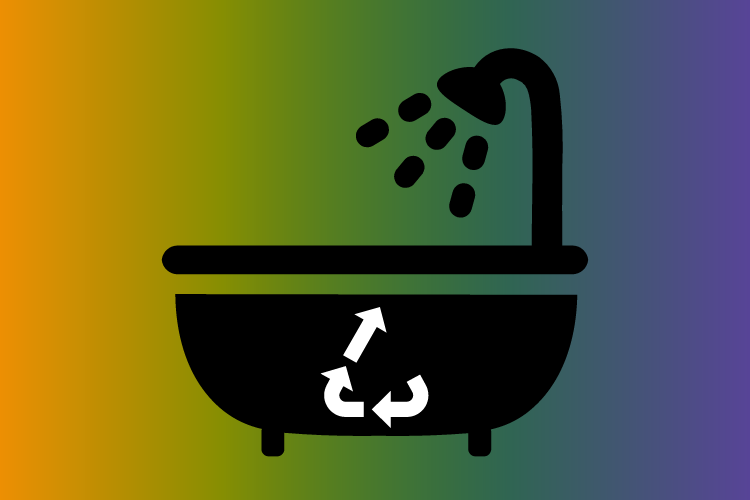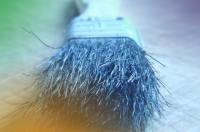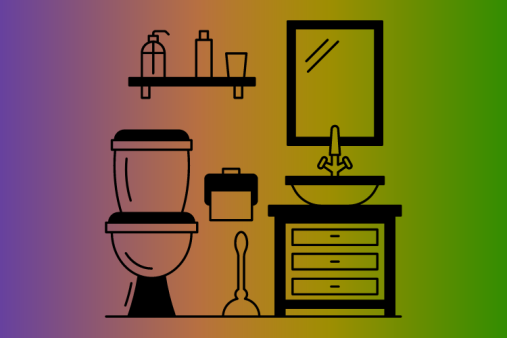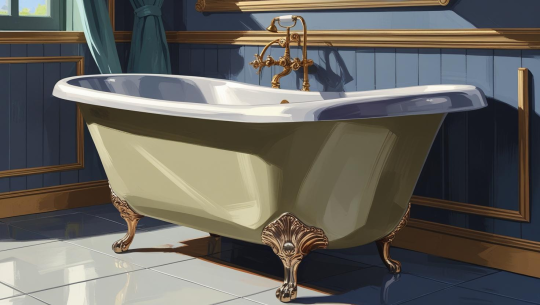Recycling or Upcycling Your Old Bathroom Suite
Getting a new bathroom is an exciting renovation project but before you can get a new bathroom suite in, you have to get the old one out. Often, the company managing your installation will do this for you. But if you’re fitting the bathroom yourself, or just want to save money in the money to splash out on expensive touches elsewhere, could you manage the job yourself? And perhaps even more importantly, is there money to be made in your old bathroom suite?
Selling Your Old Bathroom Second Hand
Before you get the hammer out and start dismantling your old bathroom, take some pictures of your old suite. You can then offer it for sale on free listings websites such as Gumtree, or advertise it at a cheap price through Ebay. If your bathroom suite is in good condition, then someone may be prepared to pay you for it. Developers on a budget may be happy with a second-hand bathroom suite, especially if it’s in good condition and fairly plain design. If you have some antique or unusual items in your bathroom, especially freestanding iron baths, these can sell for substantial sums of money. If you are lucky enough to have Victorian radiators or cast iron baths in your home which you wish to sell, it’s also
Another option if you really don’t think your bathroom suite is worth any money, or if you try and fail to sell it through an auction site, is to offer your bathroom suite free of charge to anyone who wants to take it away. Although you won’t be getting any cash in hand following this approach, you will save yourself the effort of removing the suite yourself, and the transport costs associated with hiring a van to take it to the tip or paying someone else to take it away for you. Either way, you’re saving money which you can then spend on your new bathroom in other ways.
Taking Your Old Bathroom Suite to the Tip
If you’ve tried to get someone to take your bathroom suite away and have failed, then your next stop is the local recycling centre, commonly known as the tip. If you are a private individual, clearing your own bathroom, then you won’t need a licence to dispose of waste at your local recycling centre. However, smaller centres may ask you to make an appointment, especially if you are dropping off large loads of waste. Check your local Council’s website for details of the opening hours for your local recycling centre, and give them a call ahead of time to ask if there are any special requirements for dropping things off.
Hiring a Skip for Bathroom Waste
If you are removing more than just the bathroom suite, then hiring a skip can be a better option than making repeated trips to the tip, or hiring a van. Having a skip delivered for around a week will give you plenty of time to clear out the bathroom and fill the skip with broken tiles, flooring, and anything else which you want to dispose of at the same time. If you have a driveway for the skip then just arrange with the hire company to have it delivered; if you need to leave the skip on the street you might need special permission from the Council first. The skip hire company should be able to advise about the restrictions in your local area. Hiring a medium-sized skip for a week will cost around £200, and the skip company will deal with delivery, removal, and disposal of anything you put in the skip.
Dismantling Your Old Bathroom Suite
Stripping out your old bathroom is the first task, whether you are selling your bathroom on, or just taking it to the tip. Of course you can pay a bathroom fitter to do this for you, but doing the work yourself will free up money in the budget to spend elsewhere. Before you even think about starting to pull things apart in the bathroom make sure you have the basic knowledge and skills to tackle the job. Do you know how to turn the water off to the bathroom so you don’t flood the rest of the house as you’re working? Depending on your plumbing set up, you may be able to use individual valves on the pipes leading to each water outlet, but in older properties the only way is to turn off the water at the stopcock, which is usually found under the sink or where the mains water comes into the house. You will also need some basic tools to do the job, but nothing fancy; just your usual kit of spanners, monkey wrenches, old rags or towels to mop up any spills, and screwdrivers.
Removing the Bathroom Sink
Sinks come in a range of styles. The easiest sort to remove is the traditional pedestal basin, where the pipework is easily accessible behind the ceramic structure. If your basin is mounted into a vanity unit or is wall-hung, then it might be more difficult to remove. Luckily, this is where the internet comes into its own, and there are endless videos on YouTube of people removing every style of sink imaginable. In fact, even if you are fairly confident about what you’re doing, it’s a good idea to watch a few videos as a refresher on the problems you might come up against.
Removing the Bathtub
Take the front panel off to get access to the underside of the bath, and this should give you a better idea of what you are dealing with. Disconnect the supply pipes to the bath, bearing in mind that you might have to cut through them with a hacksaw to get the bath out of position. Wind down the feet of the bath if they have been adjusted to height. Using a sharp Stanley style knife, cut through the silicone seal around the wall, and the bath should now be loose enough to just pull free from the wall. Acrylic (plastic) baths are light but bear in mind that if you are trying to remove an enamel or stainless steel bath these can weigh a considerable amount and you might need another pair of hands to help you get the bath out of the house.
Disconnecting and Removing the Toilet
After you’ve turned off the water supply either to the toilet or in the whole house, flush the toilet to drain the cistern of water. Double check it isn’t refilling before you set to work. Undo the fixings for the cistern and use your wrench to disconnect the water pipes. The toilet pan is usually screwed into the floor, so you may have to lift tiles or other flooring, and use the right size of screwdriver to remove the screws. Modern toilets are usually connected into the waste pipes with a “push-fit” connector, which means you just have to pull it away from the wall. Older toilets might be secured in place using putty, or in the worst-case scenario, concrete. If you come across this sort of fitting, you will need to use your hammer or other tools to carefully chip away at the seal. Block up the soil pipe with some old rags to prevent anything falling in – but don’t push it too far down as you will need to retrieve it in order to fit your new toilet.
Thinking Outside the Box – Weird and Wacky Ways to Upcycle your Bathroom Suite
A new bathroom suite doesn’t mean having to get rid of the old one entirely. The trend for upcycling means taking your old furniture which you don’t want any more and instead of it going into landfill, changing it into something useful, or decorative. There are all sorts of ideas about what can be done with old bathroom items, and the possibilities are really only limited by your imagination. Bath tubs can be upcycled into seating by using a saw to cut through the tub, mounting the pieces on feet, sanding the edges and putting comfortable cushions inside. This style of upcycled seating works well in gardens. Alternatively, create a point of interest in your garden by using your old bath as a planter. Paint or decorate the sides and use it to grow vegetables or flowers. Although the plug will provide natural drainage through the bottom of the tun, you might want to drill a few extra holes to keep your plants healthy.
Toilets can be repurposed as planters too, and plants can be grown in the space for the cistern and the pan too. Ceramic toilets are durable and hardwearing, and should stand up to pretty much anything the British weather throws at your garden. Look online for upcycling inspiration – there are endless blogs and videos showing you the step by step process of upcycling every bathroom item you can think of. While you’re looking, you might come across other ideas for using repurposed items in your new bathroom too.





